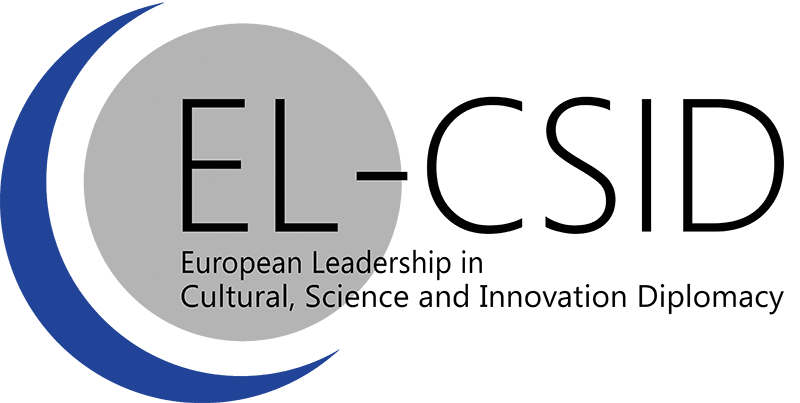Is there something like innovation diplomacy?

Innovation as a new topic in international affairs
In recent years, innovation has become a topic in foreign affairs and in the practices of diplomacy. The number of publications which talk about “innovation diplomacy” is rapidly growing. Such talk about “innovation diplomacy” is of very recent date and mostly exploratory. There is no generally accepted meaning of the term and there are no established practices.[i]
Countries like the US or Brazil (before it plunged into a crisis) are trying to push their innovation models and their most important technology platforms in other places around the world. China is accused of large scale theft of intellectual property. Several countries are forcing companies that want to establish a subsidiary in their country to also invest in R&D in the country. India has been and still is used as a cheap and relatively unregulated testing ground for new medicines, sometimes exposing the population to unwanted risks. Wealthy countries are actively seeking alliances for innovative solutions for problems of health, food and water-supply in Africa.
In all these examples, some form of diplomacy plays a role, to protect power and economic interests, to help companies gain access to markets, to contribute to solving what are now seen as global problems, etc. In other words, the topics that diplomacy has to deal with are changing and often require more and deeper knowledge of a specific field. And diplomacy is no longer something between governments, but involves new players like regional and city governments, companies, NGOs, private initiatives, research and technology organisations, etc. This goes way beyond the somewhat better established practices of science diplomacy and of having science attachés in embassies. Such practices were strongly shaped by a view on building relationships based on a relatively neutral and independent science. The new practices are closer to direct economic interests and open up a new world of foreign policy networking which, in order to be effective, needs focus and guidance.
Against this background, work package 2 of the EL-CSID project has the intention to develop a framework for thinking about the role of innovation in diplomacy and to develop a few tools which help structure and map changes in the field, in terms of topics, stakeholders and available policy instruments.
Innovation, globalisation and competition
New technologies and knowledge driven innovation have become major longer term growth factors in the economy. Generally, innovation is seen as the capacity to develop new products, services and systems and put them to use in society (as public goods and/or as marketable products and services). With the globalisation of economies and with the rise of global problems (e.g. climate change), capacities to innovate are often no longer confined to country boundaries. The increasing costs and thus the business-risks of the development of new key technologies in ICT, life sciences and other fields force companies and public research organisations to collaborate. Technology solutions with global reach are needed. And the capacity to develop such solutions is increasingly becoming globalised. We talk about global technology platforms, global value chains, and left alone, technology will only push for further globalisation. This is good news for the companies and countries that have managed to control and stay in control of the global platforms and thus manage to reap most of the gains. This is particularly true for the Silicon Valley based ICT companies. And it creates strong incentives for other countries to push their innovation capabilities forward in order to be part of the game.
But that is where the problem starts. The power to innovate has become something for which not only companies, but also countries and increasingly regions and cities compete. Sharing this power to support a global value chain (e.g. in the production of semiconductors, smartphones, solar cells, cars or complex pharmaceuticals) requires clear rules of the game and mutual trust. And essentially this is not different in the case of building the capacities to solve global challenges in climate change, energy, water, poverty, etc.
Traditionally, science diplomacy has had a focus on building trust and collaboration, but with the growing importance of knowledge driven innovation as a growth factor in the economy, competitive thinking is also becoming strong. Innovation policy with its orientation at strengthening a country’s or region’s innovation system evidently has strong competitive elements. This is not changed by the fact that today, just as science, innovation has become global. Differences between the dynamics and related politics of science and of innovation may create tensions in policy making. Our research focuses on understanding and (partly) mapping the linkages and tensions between science diplomacy and innovation policy (in two directions). And it aims to highlight potential future directions for science diplomacy taking the increasing importance of innovation into account. Implicit it raises and tries to answer the question whether it is useful to talk about something like “innovation diplomacy”.
Case study 1: Solar photovoltaics as a field for global competition and collaboration
One research approach will focus on how technology development is becoming a factor in shaping diplomatic relations between countries. More in particular it will analyse how solar photovoltaics (solar PV) as a field for global competition and collaboration has an impact. The decline of the European solar PV industry and the role of China in this context is one of the most dramatic stories of recent economic history. Europe being in a dominant position up until the late 2000s, China suddenly managed to not only overtake Europe as global leader but to effectively destroy large parts of the European industry with an overabundance of PV products being sold at prices with which European producers could simply not compete. All of this happened roughly between 2008 and 2012, i.e. within a time span of less than five years. In order to counter this development, the EU has put in place some trade and anti-dumping measures such as a minimum undertaking price and an overall cap on imports. This in turn has resulted in counter measures from China, severely limiting access for European companies to scarce raw materials. In the meantime, technology is moving forward and such advances are key to a European policy to regain industrial strengths in the field of solar energy. At the same time global advances in the use of solar energy are an essential element of the 2015 Paris Climate Agreement. In essence this can also be seen as a call for strong collaboration. This highly dynamic and rather exiting field gives more than sufficient inputs to an analysis of the impacts on science diplomacy.
Case study 2: Clusters, regions and “innovation cities” as new actors in the field
A second research approach will focus on how the growing importance of innovation changes the types and nature of players involved in science diplomacy. Innovation capabilities are not evenly spread across countries. The strength of industries builds on a unique combination of local and/or regional resources, expertise, and networking. Clusters, hubs, and innovation cities (to name just a few) have become key concepts to describe the importance of proximity. Increasingly not only countries, but also regions and cities will try to coordinate and direct investments in order to create comparative advantages. Europe is fostering this in its “Smart Specialisation Strategy”. Cities and regions are the upcoming players in a world of global innovation platforms and value networks. With the goal to strengthen the regional/local economy they look at the increasingly rich and complex value chains, at the links between flagship corporations and small or medium enterprises (SMEs) across sectors and countries, at the strength of the skills of their labour force and knowledge institutions and at other conditions. Mayors of innovation cities and regions (and in their wake a number of stakeholders) travel around the world to seek opportunities to strengthen the position of their city/region. And this makes them players in the field of science diplomacy. Our research will focus on how this changes the field.




















